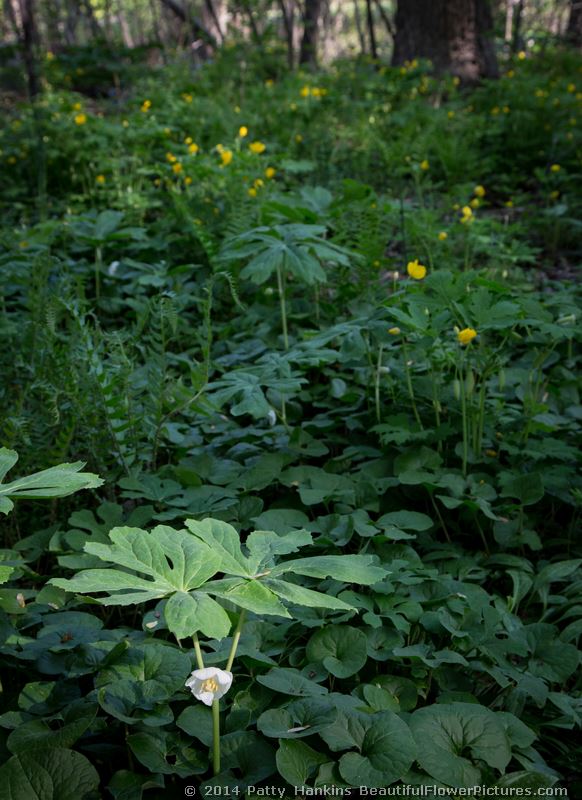
May Apple – Podophyllum peltatum
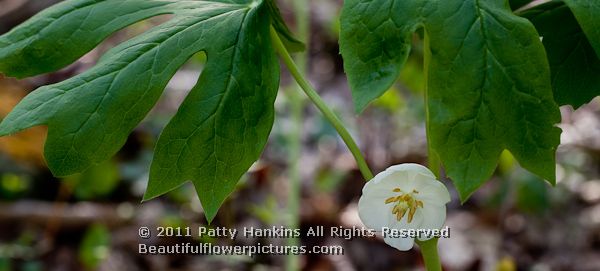
May Apple © 2011 Patty Hankins
One of the very common spring wildflowers in the Eastern United States is May Apple (Podophyllum peltatum). It’s always fun spotting the little white flowers among the sea of green leaves.

May Apple © 2014 Patty Hankins
May Apples are native from the East Coast to as far west as Texas and Minnesota. They are also found in Nova Scotia, Quebec and Ontario in Canada. Only in Florida are they listed as endangered. A member of the Berberidaceae or bayberry family, May Apples are also known as the American or wild Mandrake.
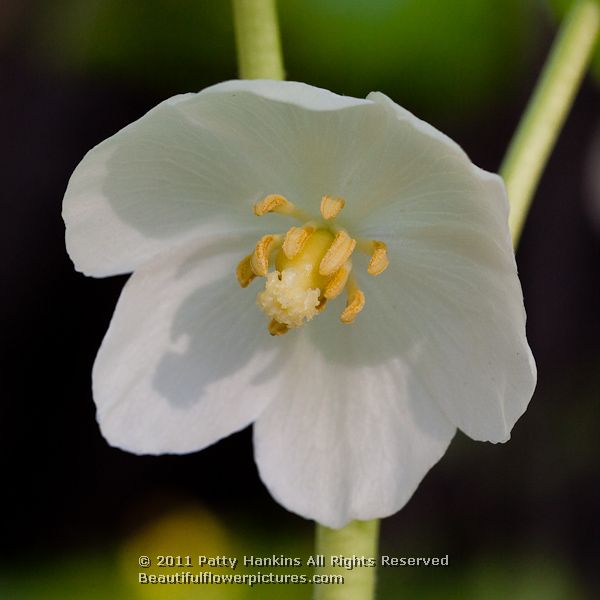
May Apple © 2011 Patty Hankins
May Apples are easy to see in the woods. They have two large leaves – with a single white flower growing at the axil of the leaves. The plants grow to about two feet tall, and the leaves are six to eight inches across. A spring blooming flowers, May Apples have between six and nine white petals – with yellow stamens in the center. If you see a May Apple with only one leaf – it won’t have a flower. They only flower when they have two leaves.
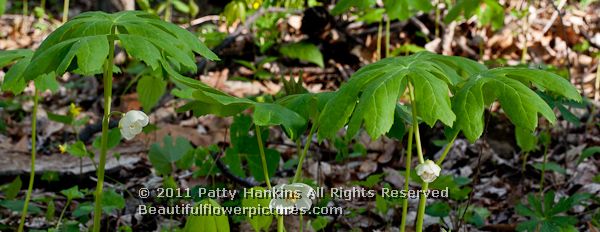
May Apple © 2011 Patty Hankins
May Apples have been used medicinally in the past. The roots were used by Native Americans as a cathartic. The fruit can be used in jellies. The leaves, roots and seeds of the May Apple are poisonous and can kill if ingested in large quantities. It’s best just not to comsume any part of the May Apple.
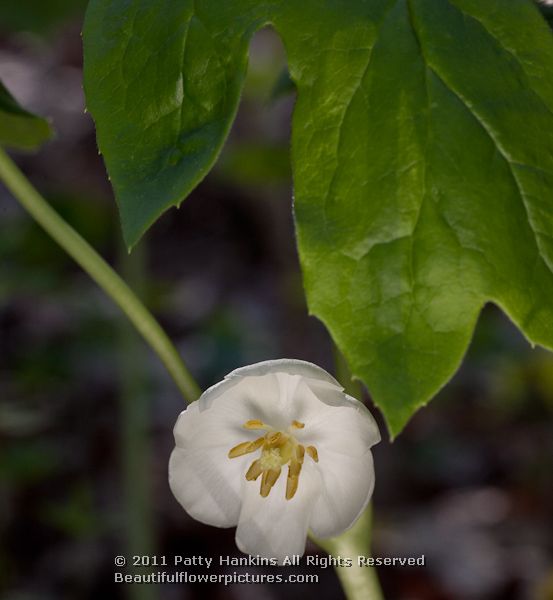
May Apple © 2011 Patty Hankins
For more information about May Apples, the following sites have additional information
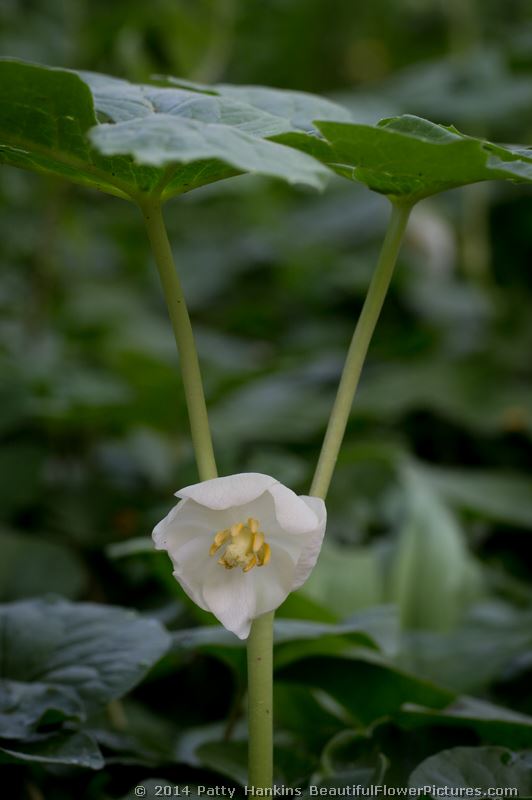
May Apple © 2014 Patty Hankins
Native American EthnoBotany Database